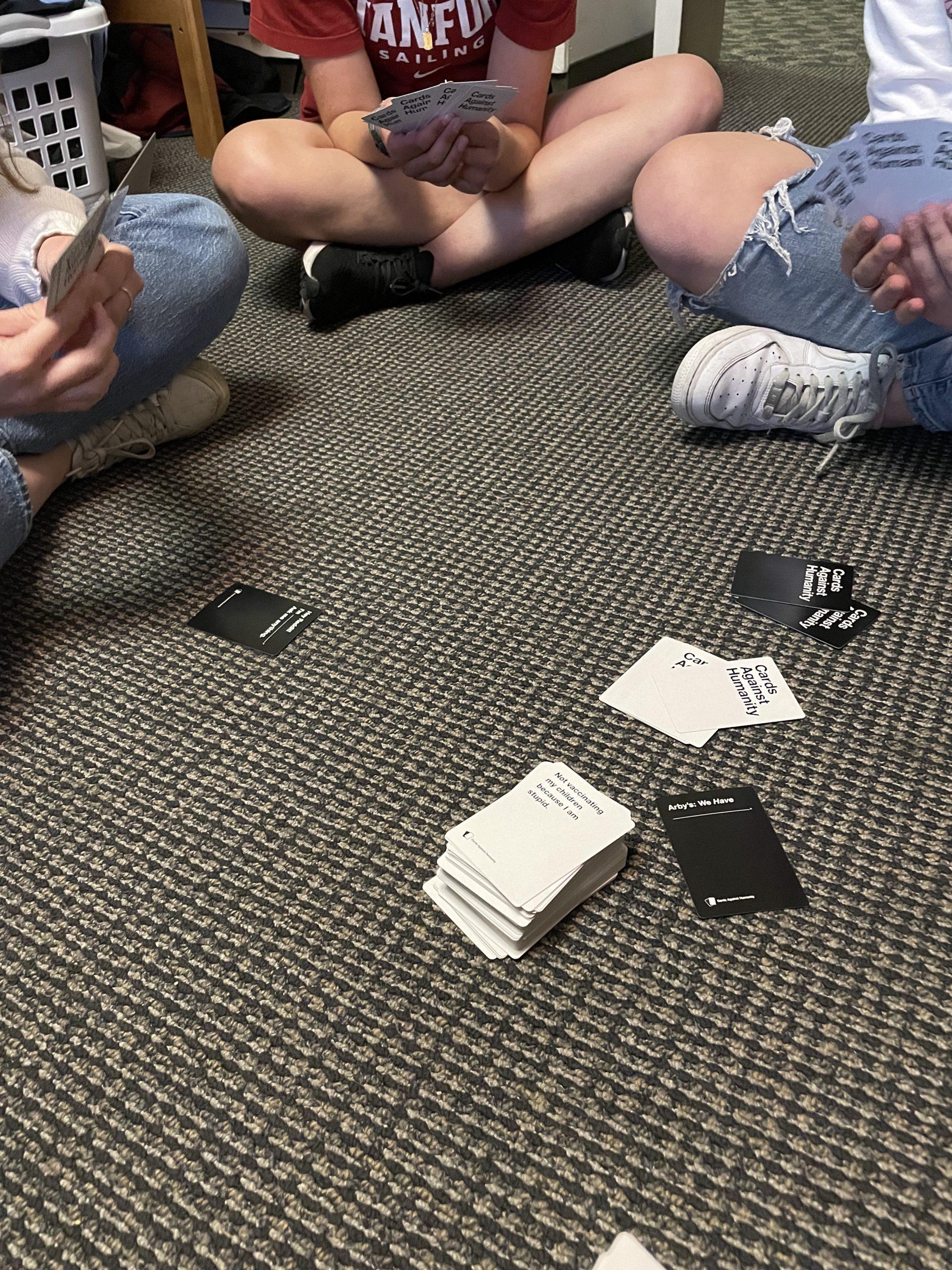Name of Game: Cards Against Humanity
Creator: Cards Against Humanity LLC
Platform: In-person (real world)
Target Audience: Young adults (17+) who are familiar with each other
Formal Elements:
Cards Against Humanity says it is designed for 3-20+ players. but 4-8 players would probably be the ideal number. Players interact through unilateral competition, where each player attempts to collect as many cards as possible. The objective of the game is to capture cards by outwitting opponents – this is done by producing a card that you believe that the player judge will deem the funniest. The game is played within the boundaries of the provided deck of cards, which are delineated by black fill-in-the-blank cards and white answer cards.
Comparison to Similar Games:
Cards Against Humanity is of the same genre as Apples to Apples and Jackbox Party games. The games are similar as they all take a prompt, and the player who generates the best response gains points or cards. They all differ slightly. Cards Against Humanity and Apples to Apples follow a similar format where all cards are pre-generated, but the former is designed for a more adult audience as cards contain “phrases typically deemed offensive, risqué or politically incorrect”1, whereas Apples to Apples cards are designed for children. Jackbox Party games are similar in that they provide a prompt, but users generate answers, and everyone judges rather than game generated answers and one judge. Playing Cards Against Humanities, I found it less fun than when I remember playing Jackbox Party games. I believe this comes down the ability to personalize answers, which allows for inside jokes between the group, or even ‘meta’ jokes within the game (e.g. giving the same answer another player did earlier but in a different context).
Intended Type of Fun:
The intended type of fun of Cards Against Humanity is fellowship. It is designed to bring you closer to friends, and act as a social framework to spend time with others. I found that it accomplished the goal – answers sparked side conversations and led to discussions outside of the game. One could also argue that Expression was also a type of fun of this game. I found this partially true – I could select a card I believed the judge would find most funny, but often had cards that didn’t fit or work, and this left me producing poor answers.
Vulnerability in Game:
There was some degree of vulnerability, but I found this to vulnerability to be group-wide rather than individual. By that, the group needed a level of familiarity with one another to play the game, with the game design making cards and answers that were shocking and often insensitive. This leads to laughter because the absurdity of the answers does not come at any player’s expense, but it also requires a level of comfort with fellow players. I did not find much vulnerability on an individual basis, because I was not required to produce content that was outside of the game, removing personal responsibility/accountability from answers, and answers were mostly anonymized by the procedure of the game.


Reference:
- https://en.wikipedia.org/wiki/Cards_Against_Humanity


